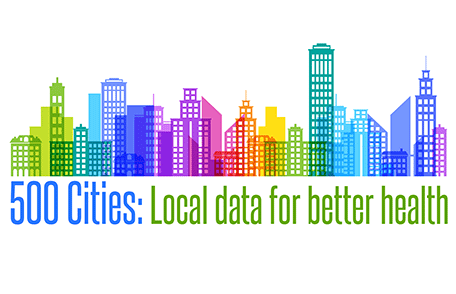500 Cities: Local Data for Better Health
 500 Cities Project allows for local targeting of interventions to areas where they are most needed for maximum public health impact.
500 Cities Project allows for local targeting of interventions to areas where they are most needed for maximum public health impact.
Everyone has a loved one, friend, or neighbor who has a chronic condition such as heart disease or cancer. Until now, local level data to understand and address these health challenges have been limited . This type of health data is now available through the 500 Cities Project, a new, interactive website that allows users to view and explore local data for America’s 500 largest cities.
What is 500 Cities?
The 500 Cities Project is a partnership with the Centers for Disease Control and Prevention (CDC), the CDC Foundation, and the Robert Wood Johnson Foundation. The Project identifies, analyzes and reports on 27 chronic disease measures focusing on conditions, behaviors, and risk factors that affect the public’s health. While data have been available at the state, county, and some city levels, this project is a first-of-its kind release of data on a large scale for cities and neighborhoods within cities.

500 Cities Project allows for local targeting of interventions to areas where they are most needed for maximum public health impact.
Why is the 500 Cities Project an important resource?
The 500 Cities Project delivers local data to public health professionals, city officials, policymakers, and researchers. It helps them use the data to develop and implement effective and targeted public health prevention strategies and interventions, identify critical and emerging health problems, and establish health objectives. This project provides the data estimates necessary for local partners to focus efforts in areas where they are most needed. For example, health department officials can use the website to find communities that have a high estimated burden of heart disease and stroke and then plan blood pressure and cholesterol screenings in those areas. Through the 500 Cities Project, users can zoom in to their neighborhood and explore local data in the larger context of their city.
Visit the 500 Cities webpage for more information.
- Page last reviewed: March 9, 2017
- Page last updated: March 9, 2017
- Content source:
- National Center for Chronic Disease Prevention and Health Promotion, Division of Population Health
- Page maintained by: Office of the Associate Director for Communication, Digital Media Branch, Division of Public Affairs




 ShareCompartir
ShareCompartir